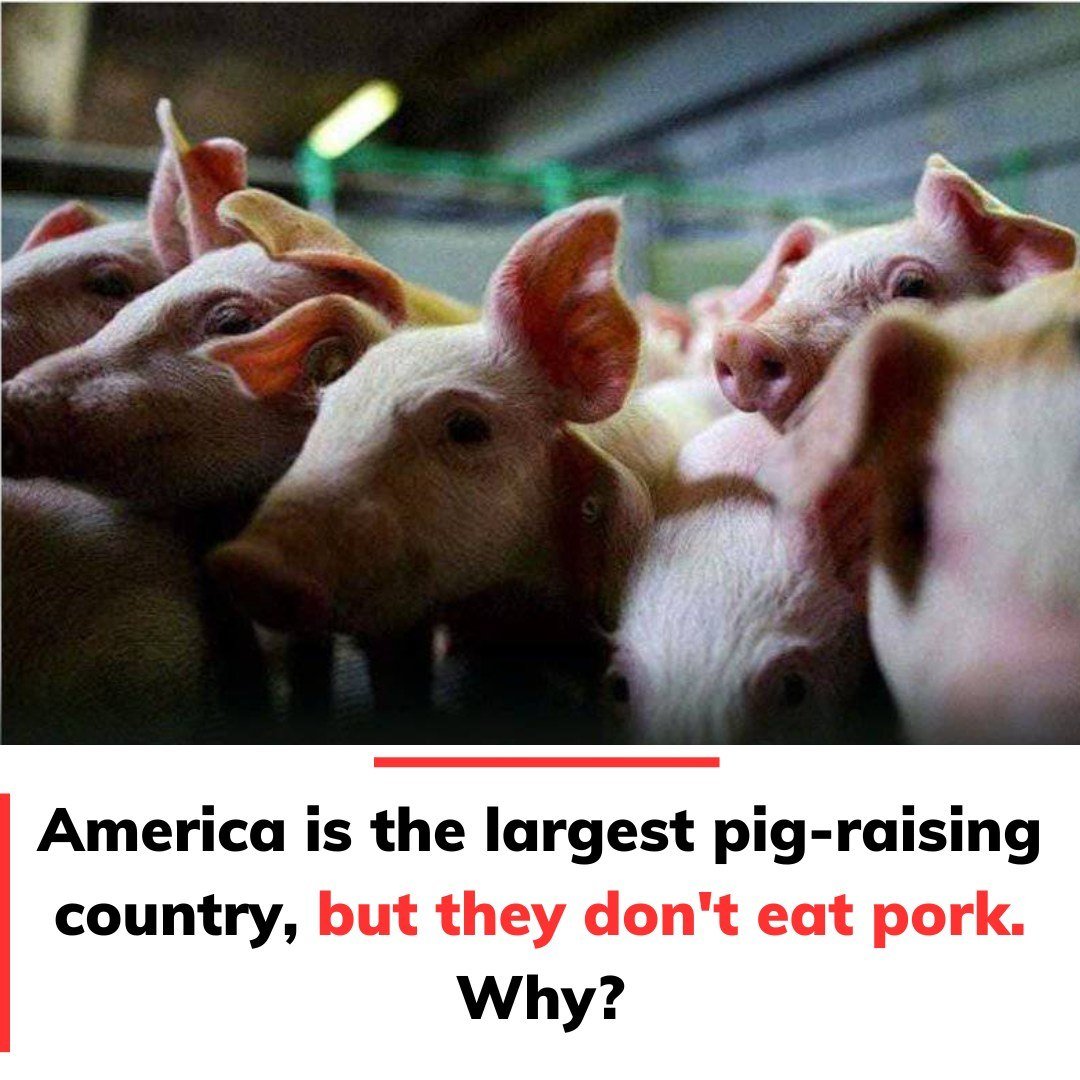Despite being one of the world’s largest pork producers, the United States has a surprisingly low appetite for pork compared to other types of meat. While the country consumes around 100 million pigs annually, pork still plays second fiddle to chicken and beef in most American households. So, why do Americans seem to shy away from pork despite its abundance? The reasons stem from cultural history, cooking traditions, and shifting dietary preferences.

1. A Lack of Pork-Centric Culinary Traditions
One major reason for pork’s relatively lower popularity in the U.S. lies in how it’s traditionally cooked. In American cuisine, pork often doesn’t shine the way beef does in a steak or chicken does in a roast. Many popular pork dishes, like pork chops or pulled pork, lack the cultural prestige or culinary artistry associated with beef steaks or grilled chicken.
Additionally, pork is often viewed as either a breakfast food (think bacon or sausage) or something reserved for BBQs (like pulled pork sandwiches or ribs). This limited culinary range means pork isn’t as widely featured in diverse meals compared to beef or poultry.
2. Cultural and Historical Influences
Historically, pork doesn’t have the same culinary roots in American culture as other meats. While pork is a staple in cuisines across Europe and Asia, its integration into American food culture has been more limited. Early American settlers primarily raised pigs for lard and not for the meat itself. As industrialization took over, beef and chicken became more dominant due to mass farming practices and the rise of fast food culture.
In comparison:
- Beef: Became a symbol of American prosperity, with steak and burgers taking center stage.
- Chicken: Was marketed as a leaner, healthier protein and gained popularity through fast-food chains like KFC and Chick-fil-A.
Pork, meanwhile, didn’t receive the same marketing push or cultural spotlight.
3. Pork as an Invasive Species
Surprisingly, pigs are considered an invasive species in many regions of the United States. Feral pigs, descended from escaped domestic pigs and wild boars, cause significant damage to agriculture and natural habitats. This negative environmental reputation might contribute to pork’s lower appeal among certain American consumers, especially those who are environmentally conscious.
4. A Stagnant Domestic Pork Market
The demand for pork in the U.S. has remained relatively unchanged for the past 20 years. While beef and chicken have seen significant growth in consumption and culinary innovation, pork has remained somewhat stagnant. American consumers gravitate toward meats they perceive as healthier (chicken breast) or more indulgent (a juicy beef burger).
Additionally, much of the pork produced in the U.S. is exported to countries where pork is more culturally significant, such as China, Japan, and South Korea. These international markets often have a higher demand for pork cuts that are less favored in American kitchens.
5. Changing Dietary Preferences
Modern dietary trends also play a role in pork’s modest popularity:
- Health Concerns: Pork, especially fattier cuts, is often perceived as less healthy compared to lean chicken breast or fish.
- Religious Restrictions: Certain religions, including Islam and Judaism, prohibit pork consumption, reducing its potential market share.
- Environmental Awareness: The environmental impact of pork farming raises concerns for eco-conscious consumers.
As a result, Americans are increasingly turning to plant-based proteins, lean meats, and sustainable seafood.
The Future of Pork in America
Despite these challenges, pork still holds a meaningful place in American cuisine. Bacon remains a beloved breakfast staple, and pulled pork sandwiches are a highlight of summer BBQs. Additionally, culinary trends inspired by global cuisines—like Korean BBQ or traditional European pork dishes—are slowly increasing pork’s appeal in the U.S.
To boost pork’s popularity, producers and marketers will need to:
- Promote diverse cooking styles.
- Highlight pork’s versatility in global dishes.
- Address health and sustainability concerns more transparently.
Pork: A Misunderstood Meat in American Kitchens
While pork may not hold the same cultural significance or market share as beef and chicken, it remains an essential part of the American food landscape. Its underwhelming popularity can be attributed to cultural traditions, limited culinary innovation, and changing dietary trends.
However, with evolving tastes and the rise of global flavors in American cuisine, pork might yet find its place at the center of the American dinner table. For now, it remains a protein with untapped potential in one of the world’s largest meat-consuming nations.





